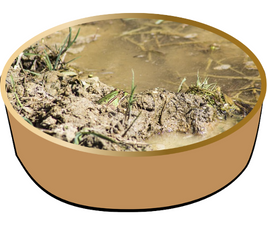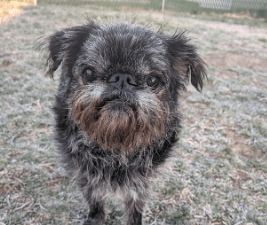Did you know your dog’s water bowl may be harboring lethal organisms? That slippery, slimy gunk that develops isn’t slobber. It’s a breeding ground for bacteria, algae, and fungus. And it’s not only dangerous to your dog’s health. It’s not good for you, either.
We’ll never forget the first time we went to a friend’s house after she got her first puppy. We went into the kitchen to get something-or-other, and saw the interior of her puppy’s white, ceramic water bowl was orange with slime. We asked when was the last time she washed it. She said she didn’t know she was supposed to.
We’re telling you – wash your dog’s water bowl. Really. If not every day, every other one. Better yet, have two and alternate using them and putting them in the dishwasher for thorough cleaning. You want no part of what grows in a dog’s stale water bowl.
They call it “biofilm”
Biofilm is the almost scientific name for the slimy goo that builds up in the water bowl. It’s a mixture and growth of whatever nasties your dog may have found on outside adventures, as well as whatever’s floating around in the air. It can range in color from clear to black, with pink, green, orange, and red all possible.
If it’s clear, how do you tell if it’s there? We know you take wonderful care of all your pets. But did you ever pick up the water bowl to change it and notice it was a bit slippery? That’s biofilm. Wash your hands.
Back in middle school biology class, we did an experiment with water. Each set of lab partners got a jar that we filled with clean tap water. And into that clean water we put sticks, leaves, stones – whatever we came up with after a few minutes outside in the school yard. And after a week, that jar was murky, disgusting, and brimming with all kinds of microscopic (and some larger) life. The inside of the jar was coated with a slimy biofilm. Do you really want your dog drinking pond water?
Friend or enemy
We know that some people will think “there are lots of bacteria that are beneficial for both dogs and people. Look at all the companies selling pre- and pro-biotics these days.” While we agree on the concept, we’d rather get our bacteria from known sources. Share some yogurt with your dog. Clean the water bowl.
You may find that your dog really likes fresh, clean water better. Simon, Fran’s 4-year-old Boston Terrier, likes nothing better than a refill, fresh from the tap. Just recently we had an incident where he was so eager, he jostled Hope’s arm before the bowl was on the floor. After the spill was cleaned up, we got in a little training game to remind him to mind his manners.
Another water bowl issue
While we’re on the subject, it’s also worth mentioning that it matters what the water bowl’s made of. If you’ve ever seen red spots or pimples on your dog’s chin or muzzle, that could be dog acne. They get it too. And the issue could be using plastic water bowls. To prevent dog acne, your dog’s bowls should be stainless steel, ceramic, or glass. Since we have a bunch of hooligans, we use stainless bowls. If you don’t have to worry about breakage, by all means use a more decorative ceramic or glass bowl. Just be sure, whatever you use, that it’s dishwasher safe.
Enjoyed this post? Click here to sign up for the weekly newsletter and never miss another!










